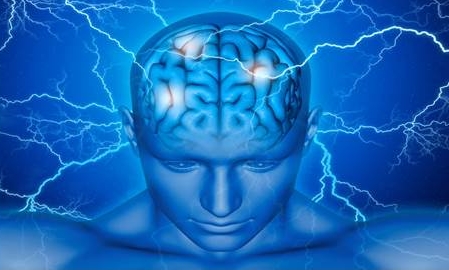It’s a way to go that NONE of us want—dementia. It is so hard on our loved ones. Unfortunately Alzheimer’s disease, the most common cause of dementia, is on the rise. The disease affects 5.5 million Americans currently, and is projected to balloon to 13.8 million by 2050. Approximately $259 billion dollars was spent last year caring for those with Alzheimers.(1)
Brain cells die from being strangled by abnormal connections called neuro-fibrillary tangles. Diagnosis is made by cognitive decline and a specific appearance (amyloid plaques) on brain MRI. Once diagnosed, the average length of survival is less than 5 years.(2) Alzheimer’s is a deadly disease for which there is no cure.
The aim of traditional medical treatment is to slow down the decline, but the success rate is dismal. Despite hundreds of millions of dollars spent in research there has been no magic bullet.(3) The disease progresses despite expensive medications.
A new view of Alzheimer’s
Dale Bredesen, MD, a researcher and expert in treating cognitive decline, has a different approach. He hypothesizes that the plaques are a protective mechanism. Protection from what? That’s the key to knowing how to treat it! Rather than a “silver bullet”, he recommends a multidimensional approach, sort of a “silver buckshot”. In his book, The End of Alzheimers’s, he breaks down the disease into three types.
Type 1—Inflammation
In response to inflammation, the brain cells produce amyloid plaque as a protective mechanism. It doesn’t matter if the inflammation is from chemicals in your food, trans-fats and sugar in your diet, insulin resistance, lack of sleep, or an infectious agent like Lyme disease. The body’s response is the same when it perceives something is wrong—inflammation, and in the brain this leads to amyloid plaque.
The treatment is removing the underlying inflammation. Remove artificial chemicals, eat an anti-inflammatory diet, get enough restful sleep, rid infections. It takes some detective work to get to the root, but it is worth the effort.
Type 2—Atrophy
Your brain needs neuron-promoting factors and nutrients to be optimally healthy. Loss of key nutrients and hormones that promote brain health is the crux of type 2 Alzheimer’s. The nutrients include vitamin D and B vitamins (especially folate). Important hormones are thyroid, estradiol and testosterone.
Maximizing both nutritional status and hormone balance is the treatment plan.
Type 3— Toxin-mediated
Amyloid accumulates in response to toxic metals and biotoxins. The worst heavy metals are mercury, cadmium, arsenic and lead. An imbalance in copper and zinc is also a risk. Biotoxins are most often mycotoxins produced by molds. These substances irritate the brain and lead to amyloid production as a protective mechanism.
The three types of Alzheimer’s share the fact that something is causing damage/irritation to the brain cells, and amyloid accumulates sort of like a scab on a wound. However too much amyloid disrupts anatomy and leads to the neuro-fribillary tangles that ultimately strangle the cells, causing neuronal death. Functional medicine seeks to identify and remove the root cause of the damaged/irritated cells.
A proactive approach; What can you do?
If you want to be proactive in preserving cognitive function, here are some things you can do.
1. Know your ApoE4 status
I believe knowledge is power. If you have a family history of Alzheimer’s consider testing your ApoE4 status, as this is an important genetic risk for the disease. Some people have confided in me that they don’t want to know because they would just worry and dread the future. I would agree, if there were nothing else you could do, oh but there IS SO MUCH THAT CAN BE DONE!
ApoE4 causes inflammation, leading to the development of the amyloid plaques. Therefore the strategy is to fight hard against inflammation. An anti-inflammatory diet, lifestyle and supplements can make a huge difference.
ApoE4 testing is currently available through 23andMe. You can learn more about the genetics at ApoE4info.com
2. Optimize neuroplasticity
Neuroplasticity is the ability to grow new neuron connections. It wasn’t until recently that we knew this was even possible. The key chemical that promotes neuroplasticity is brain-derived neurotrophic factor (BDNF), and we need it.
Things that increase BDNF
- Aerobic exercise
- Hormone optimization of thyroid, estradiol and testosterone
- Optimized nutrients such as vitamin D and folate
- CBD oil (4)
3. Brain exercises
Cognitive stimulation is achieved by learning new things. The internet is a great resource here, with many options. Several sites exist with documented success in improving cognitive function. Several are BrainHQ, Luminosity and My Brain Solutions.
4. Remove inflammation
This sounds so basic, but it is so very important. Avoid inflammatory foods like sugar, processed foods and gluten. Get enough sleep. Avoid toxin exposures. If you have significant toxic exposures, work with a practitioner on detoxification.
5. Get evaluated
If you are over 50, have a family history of dementia, or struggle with memory loss, you owe it to yourself, and your loved ones, to get evaluated by a knowledgeable practitioner. An examination and some basic tests can be done to know if you need support in specific areas to keep your risk of dementia as low as possible. If your provider documents cognitive decline a possible brain imaging study will help to determine the underlying cause(s). Once this is determined a remediation strategy can be initiated.
Your brain is your most valuable resource. Protect it. Don’t outlive your brain.
References
- https://www.weforum.org/agenda/2017/03/this-is-how-much-the-us-is-spending-on-alzheimers
- https://www.webmd.com/alzheimers/news/20080110/average-dementia-survival#1
- https://www.alz.org/annual_report/overview.asp
- https://www.ncbi.nlm.nih.gov/pubmed/29770251





